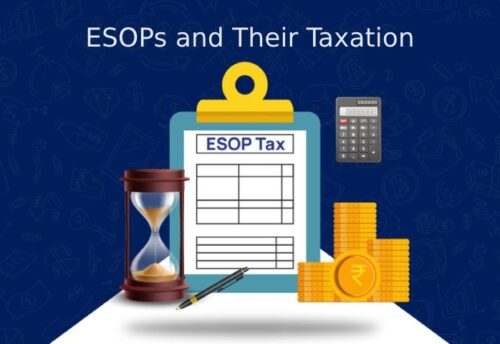
- 03/02/2025
- MyFinanceGyan
- 144 Views
- 3 Likes
- Finance
Understanding Good vs. Bad Liabilities
When it comes to managing personal finances, understanding the distinction between good and bad liabilities is crucial. Liabilities—or obligations owed to others—can have both positive and negative effects on your financial well-being. In this article, we will explore the concept of liabilities, examine their types, and discuss strategies for effectively managing them.
Defining Liabilities:
Liabilities are financial obligations or debts owed by individuals or entities to others. They can arise from various situations, such as loans, credit card debt, or even informal agreements with friends or family. Liabilities are a fundamental component of financial health and are recorded on the balance sheet alongside assets and equity. This balance sheet provides a snapshot of an individual’s financial position at a specific point in time, detailing both the amount owed and the terms of repayment.
Types of Liabilities:
- Notes Payable: Written promises to pay a specified amount within a designated timeframe. These are often used for borrowing from individuals or financial institutions.
- Loans Payable: Funds borrowed from banks or other financial institutions, typically for purposes such as purchasing vehicles, equipment, or expanding a business.
- Mortgages Payable: Long-term loans used to purchase real estate. These typically feature fixed interest rates and structured repayment schedules.
- Accrued Expenses: Costs incurred but not yet paid, such as unpaid bills for services already received.
- Unearned Revenues: Payments received in advance for goods or services that have yet to be delivered.
How Liabilities Affect Financial Statements?
Liabilities play a significant role in shaping financial health. When liabilities exceed assets, it indicates potential financial trouble. However, well-managed liabilities can serve as tools for growth, helping individuals or businesses build assets and improve credit scores. For instance, borrowing money to invest in equipment that enhances productivity can be a smart financial move, provided the debt is repaid on schedule.
Good Liabilities:
Not all liabilities are detrimental; some can positively impact your financial health. Good liabilities are those that contribute to your long-term financial stability and growth.
Characteristics of Good Liabilities:
- Low-Interest Rates: Minimizes borrowing costs.
- Long-Term Horizon: Allows benefits to materialize over time.
- Asset-Generating: Leads to the creation of assets that appreciate in value.
Examples of Good Liabilities:
- Student Loans: Investing in education can increase earning potential over a lifetime. Many student loans also offer flexible repayment terms.
- Small Business Loans: Financing business ventures can generate income and create long-term value.
- Mortgages: Purchasing real estate builds wealth through property appreciation.
- Low-Interest Credit Cards: Using these responsibly for necessary purchases can improve credit scores and provide financial flexibility.
How Good Liabilities Benefit Financial Health: Good liabilities create opportunities for long-term financial growth. For example, buying a home with a mortgage builds equity over time, while a student loan for a high-paying field can lead to higher lifetime earnings. When managed wisely, good liabilities can be instrumental in achieving financial goals.
Bad Liabilities:
Conversely, bad liabilities can harm financial health. These obligations typically have high costs and offer no long-term benefits.
Characteristics of Bad Liabilities:
- High-Interest Rates: Quickly accumulate significant debt.
- Short-Term Horizon: Provide limited or no long-term benefits.
- Non-Asset Generating: Do not lead to the creation of valuable assets.
Examples of Bad Liabilities:
- High-Interest Credit Card Debt: Rapidly accrues interest, making it difficult to repay.
- Payday Loans: Short-term loans with exorbitant interest rates and fees.
- Car Loans: Often result in a depreciating asset with high-interest payments.
How Bad Liabilities Harm Financial Health: Bad liabilities can create a cycle of debt that’s hard to escape. High-interest rates on credit cards or payday loans can quickly spiral out of control, leading to financial instability. Additionally, bad liabilities can damage credit scores, making future borrowing more difficult and expensive.
Managing Liabilities:
Effectively managing liabilities is essential for achieving financial stability. Below are strategies for minimizing bad liabilities and optimizing good ones.
Strategies for Reducing Bad Liabilities:
- Pay Off Credit Card Debt Quickly: Avoid unnecessary interest charges by making timely payments.
- Avoid Payday Loans: Seek alternative solutions for short-term financial needs.
- Borrow Conservatively: Take on only manageable amounts of debt.
Balancing Good and Bad Liabilities: Striking a balance between good and bad liabilities is crucial. For instance, a mortgage can build equity and enhance net worth, but excessive debt can lead to financial strain. It’s important to assess your financial situation carefully before taking on new liabilities.
Monitoring Liabilities Over Time: Regularly reviewing your financial position helps identify potential issues early. Reassessing liabilities ensures they align with your financial goals. For example, if career changes alter your earning potential, you may need to adjust your repayment strategy.
Conclusion:
Liabilities are an integral part of personal finance, and understanding the difference between good and bad liabilities is key to maintaining financial health. By effectively managing liabilities and prioritizing those that offer long-term benefits, you can build a solid foundation for a secure financial future.
Please note: The views expressed in this article are for educational purposes only and do not constitute financial advice or product recommendations.



